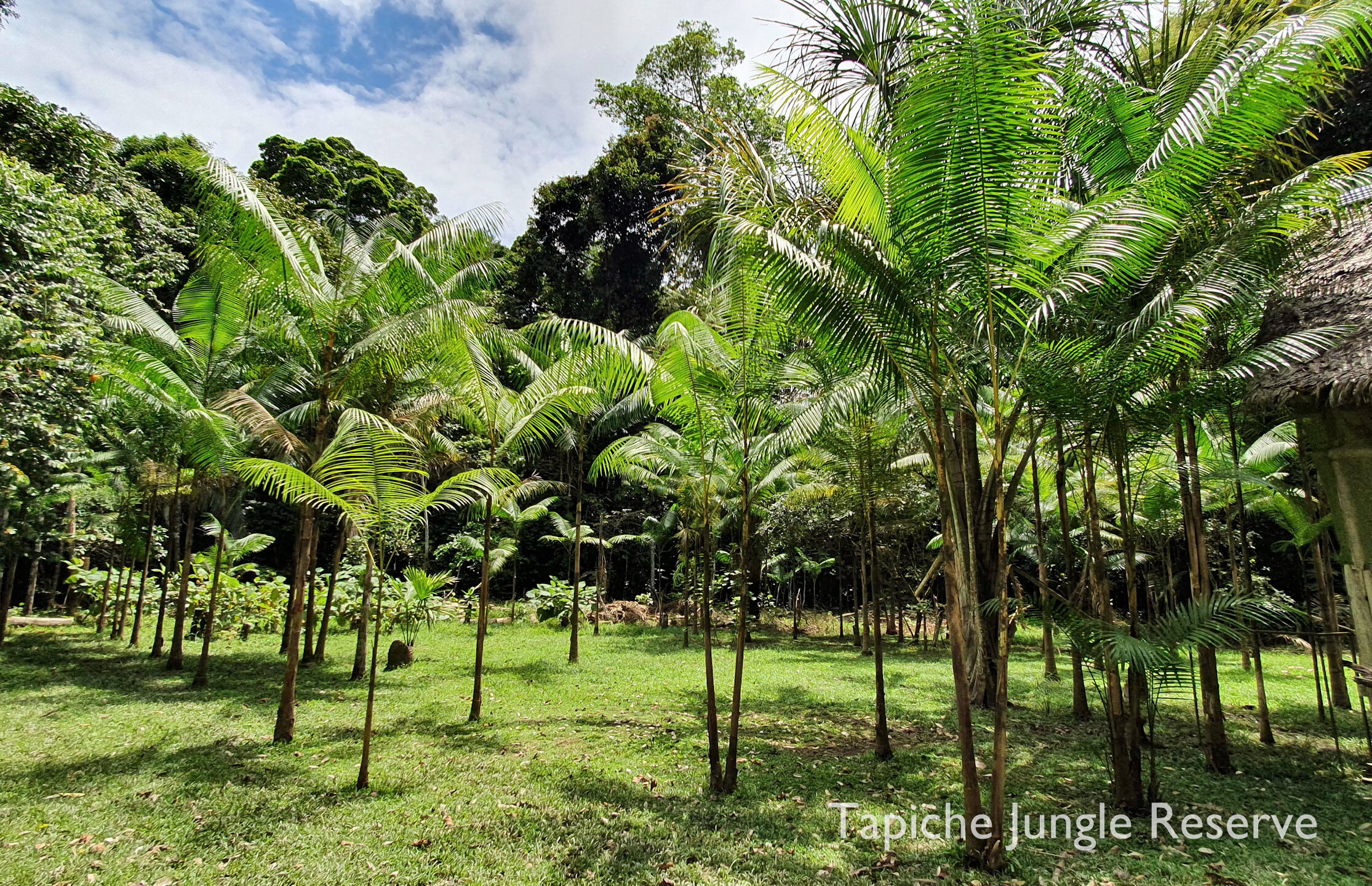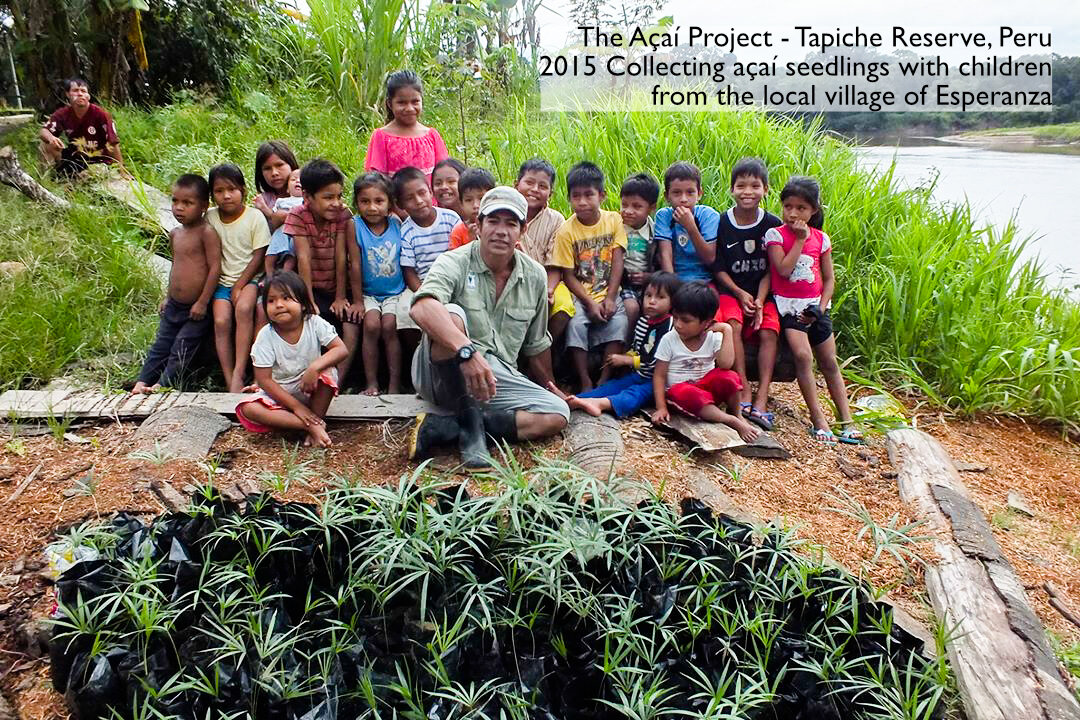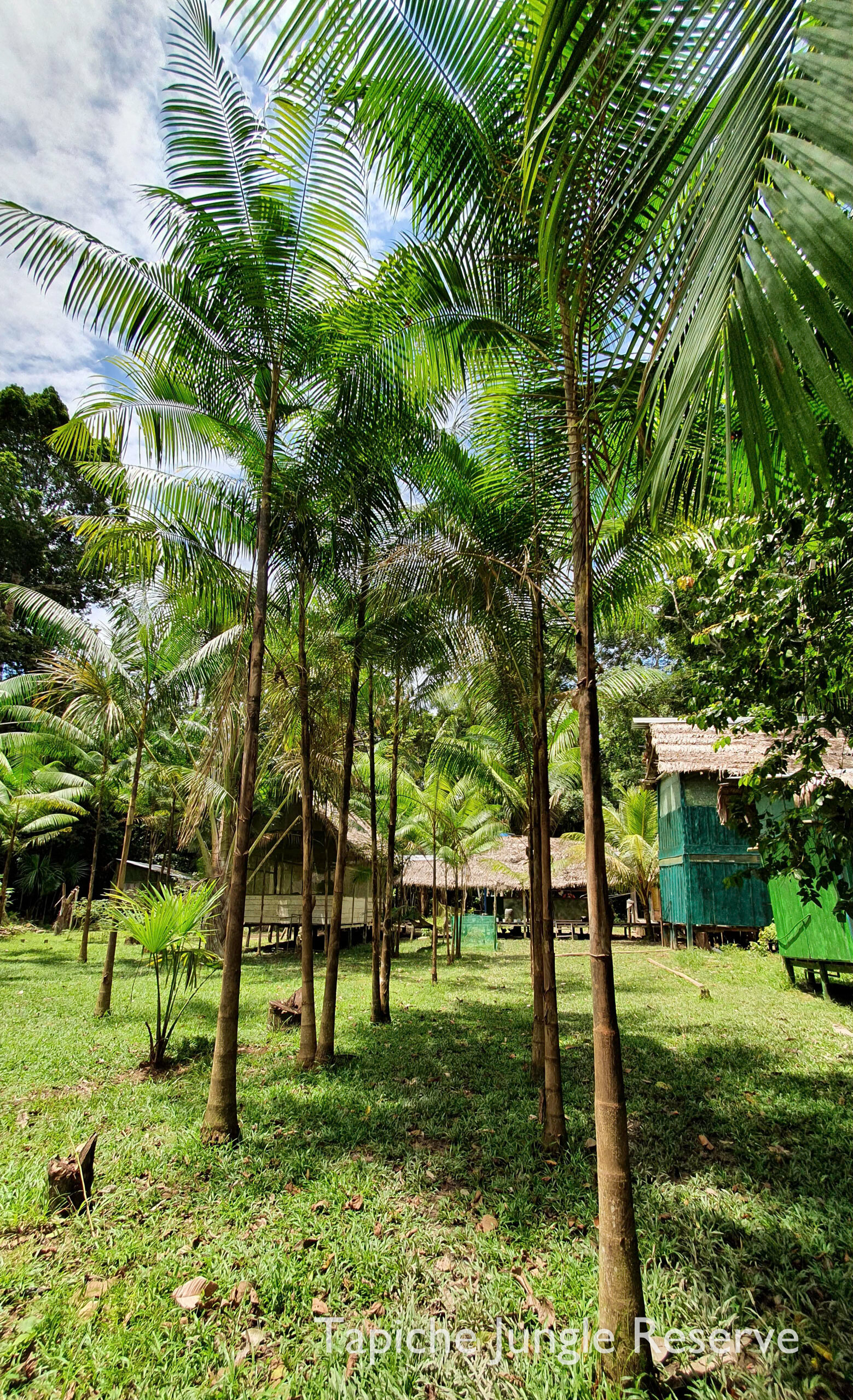The Açaí Project Update: Feb 13, 2021
[Our internet access has been very limited since we've minimized expenses, so here are updates from the past few months]
The Açaí Project - Sustainable Jungle Fruit Harvest
Update: 13 Feb 2021
The açaí berry is probably best known as the dark purple Amazonian superfood, rich in antioxidants and used in delicious açaí bowls and smoothies. The açaí palm (Euterpe oleracea) is native to tropical South and Central America and naturally grows at the Tapiche Jungle Reserve in the northern Amazon of Peru. In 2015, the Tapiche Reserve started the Açaí Project for sustainable jungle fruit harvest in an effort to provide job opportunities and a sustainable, renewable source of income for the local people. We collected 5000 açai seedlings and planted them on about 5 hectares of previously disturbed land inside the reserve. We held free workshops to show locals eco-friendly ways to harvest jungle fruits. The standard method of harvesting fruits in our region is to cut the entire tree down for a one-time harvest, and our workshops provided hands-on training on how to climb the trees, preserving the source of the fruits for the future.
We are happy and proud to share with you recent photos of the açai palms, which have developed beautiful, strong trunks and flourishing crowns! The fastest growing açais - the ones in the most favourable growing conditions - are now about 6 to 8 meters high. For comparison we added a photo of the açais from 2019, so you can really see how they hit a growth spurt during the past two years.
We had hoped that some of the trees would fruit for the first time this year, but drastic changes in the floods during the last several years resulted in unfavourable growing conditions. Since the time we planted the seedlings, we have experienced two years of severe droughts, where the water level during high water season did not rise at all and was actually at levels found during low water season, a difference of 5-8m. In addition, in the years where the flood did come, the flooding period was brief and the water did not rise as high as it should have, which may also have negatively affected the growth of the trees.
This project provides eco-friendly income opportunities on a long-term basis, because after the seedlings were planted, they and the surrounding areas had and still have to be cultivated regularly. For the planting, we employed local villagers in rotating teams of four, mimicking the work schedule and team structure of loggers and easing the transition from logging into conservation work. We offer reliable and fair wages, in contrast to logging and poaching, where locals often earn either very little or sometimes don’t get paid at all.
Once these trees produce fruits, we will be able to provide more jobs during the harvest, and hopefully the eco-friendly practice of climbing the trees to collect fruits will replace the current practice of tree-cutting.
Apart from the eco-friendly job opportunities we’ve provided to local people, this project also restores the natural landscape in areas that had been logged and cleared prior to the establishment of the reserve. We thank all the people who supported this project throughout the years, whether through donations or by contributing their own physical work and sweat on the ground at the reserve! We are proud to share the fruits of our conservation work—hopefully soon in a literal way! :-)
Here is our collection of Açaí Project blog posts.






